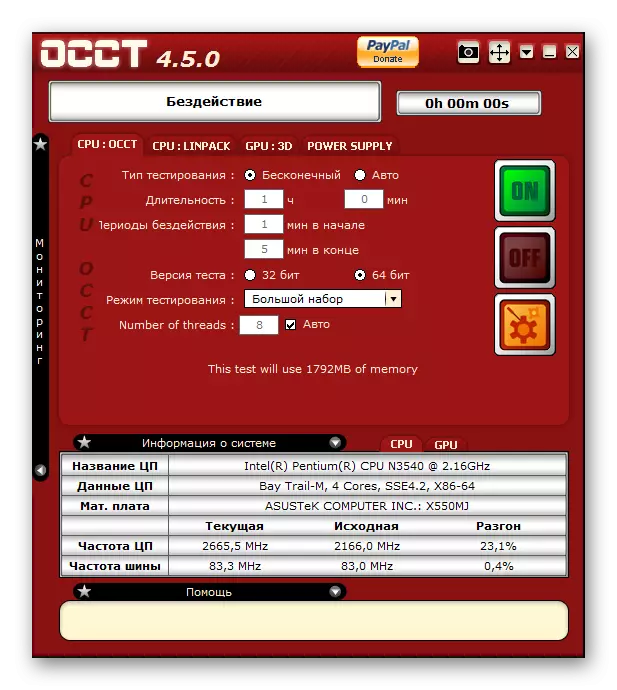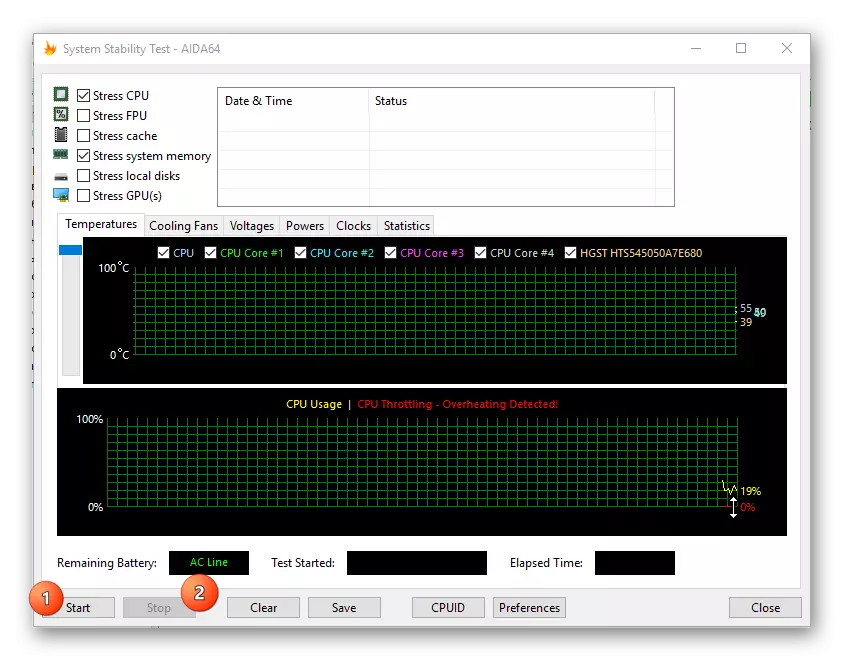
From the temperature of the central processor directly depends on the performance and stability of the computer. If you have noticed that the cooling system has become no longer noise, then it is necessary to find out the temperature of the CPU. With too high indicators (above 90 degrees), testing can be dangerous.
Lesson: How to find out the processor temperature
If you plan to overclock the CPU and the temperature indicators are normal, then it is better to carry out this test, because You can approximate how much the temperature rise after overclocking.
Lesson: How to speed up the processor
Important information
Testing the processor for overheating is carried out only with third-party programs, because Standard Windows system tools do not have the necessary functionality.Before testing, you should get better with software, because Some of them can give a greater load on the CPU. For example, if you have already dispersed the processor and / or not in the order of the cooling system, then find an alternative that allows you to test in less hard conditions or give up this procedure at all.
Method 1: OCCT
OCCT is an excellent software solution for various stress tests of the main components of the computer (including the processor). The interface of this program may seem initially difficult, but the most basic objects for the test are in a prominent place. According to partially translated into Russian and distributes absolutely free.
This program is not recommended to test components that were previously overclocked and / or regularly overheat, because During tests in this temperature, it may increase up to 100 degrees. In this case, the components may begin to melted and besides this there is a risk of damaging the motherboard.
Download OCCT from the official site
Instructions for using this solution looks like this:
- Go to Settings. This is an orange button with a gear that is located on the right side of the screen.
- We see a table with different values. Find the Column "Stop the Test when reacing the temperature" and praise your values in all columns (it is recommended to install 80-90 degrees in the area). It is necessary to avoid critical heating.
- Now in the main window, go to the "CPU: OCCT" tab, which is located in the top of the window. There will have to configure testing.
- "Type Type" - "Infinite" test lasts until you stop it, "Auto" means specified by the user. "Duration" - here is given a total duration of the test. "Periods of inaction" is the time when test results will be displayed - in the initial and final stages. "Test version" - selected, based on the bit of your OS. "Test mode" - is responsible for the degree of load on the processor (mainly only "small set").
- Once you complete the test setting, activate it with the "ON" button, which is on the left side of the screen.
- You can see test results in the additional monitoring window, in a special schedule. Pay special attention to the temperature graph.



Method 2: AIDA64
AIDA64 is one of the best software solutions for testing and collecting information about computer components. It applies for a fee, but has a demo period, over which it is possible to use all the functionality of the program without any restrictions. Fully translated into Russian.
The instruction looks like this:
- At the top of the window, find the service item. When you click on it, the menu will fall out where you need to select "System Stability".
- In the upper left part, you just opened the windows choose those components that you would like to test for stability (in our case only the processor will be enough). Click on "Start" and wait a while.
- When a certain time goes (at least 5 minutes), click on the "STOP" button, and then go to the statistics tab ("Statistic"). There will be shown maximum, average and minimum temperature change values.


Conducting the processor overheating test requires compliance with certain caution and knowledge of the current CPU temperature. This test is recommended before accelerating the processor to understand how much the average temperature of the nuclei will increase.
